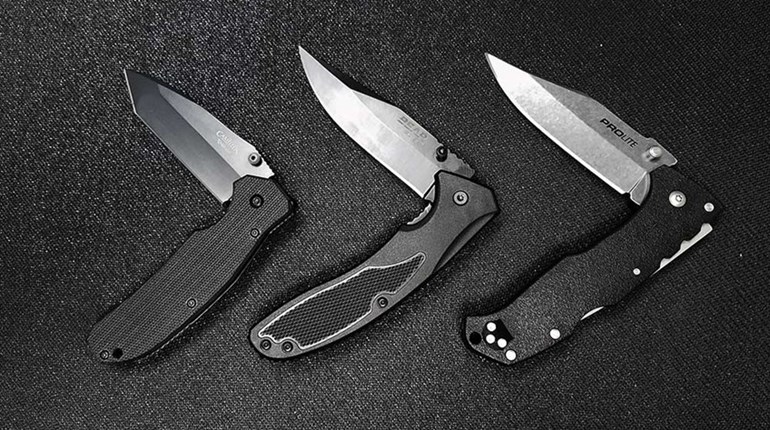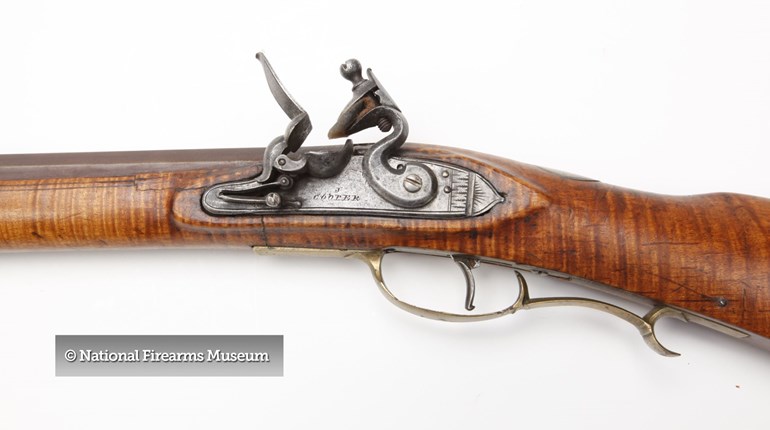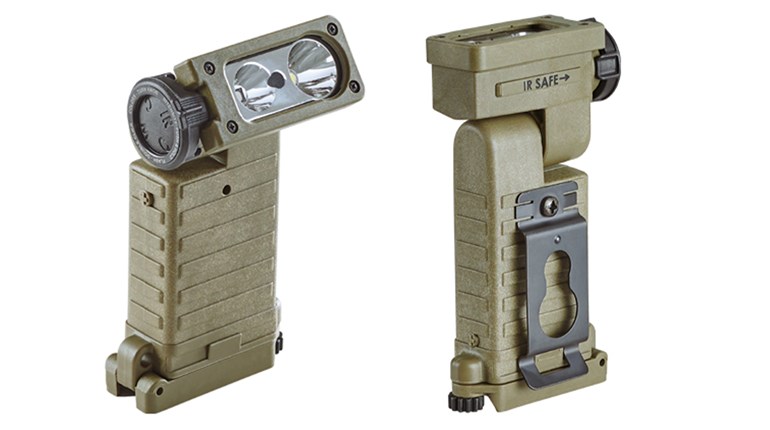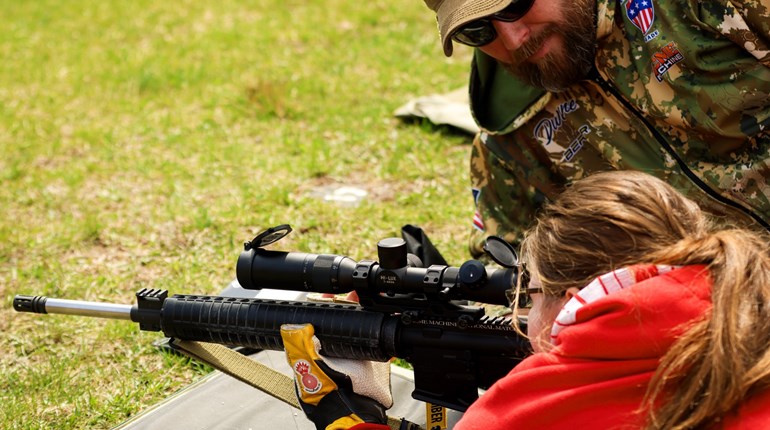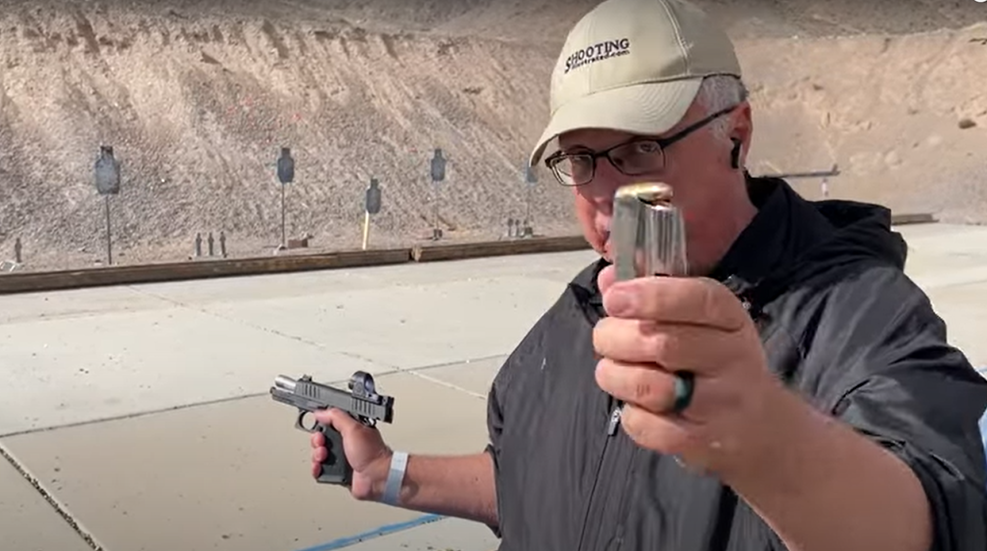
1. Magazine vs. Clip
The first thing you should understand about detachable magazines is how the naming conventions work. Magazines are used in pistols, clips are not. (If you’ve been doing it wrong until now, there’s no shame: Calling a magazine a clip is a common mistake.) Clips are not spring operated like a mag, although a strip of spring steel may be built in the seam to hold cartridges in place. Clips hold cartridges in a tight array to speed up the process of loading an internal mag. A clip is pushed into a receiver groove above the internal mag, the cartridges in the clip are manually pushed down into the internal mag by the shooter, the clip is then removed from the receiver before firing the gun. The M1 Garand is an exception to this rule, as the entire clip is shoved into the mag and left in place and the clip ejects from the rifle when empty, with a ting.
2. Construction
A detachable box mag is made of steel or polymer material. Three other parts are used: a spring, a follower and a floor plate. The spring is oblong in shape, conforming to the shape of the box. The follower rests on top of the spring. The floor plate is at the bottom of the box. Some mags are enclosed, meaning they do not have a removable floor plate.
The follower keeps cartridges angled upward, pointed toward the chamber. Magazine feed lips, folds of metal at the top of the mag, work as “railings” to guide a cartridge out of the mag. A cartridge moving up in the mag is timed with the gun bolt as it travels back and forth in the receiver. As soon as the rearward moving bolt clears the mag, the next cartridge moves up into the path of the bolt, which is now moving forward, pushing the cartridge out of the mag and into the chamber.
3. Loading
Loading cartridges into a magazine may seem a bit awkward at first, but not for long. The process is pretty straightforward, but it can take some effort due to the spring pushing against the follower. The spring has to be strong to ensure proper feeding of the cartridges. Here’s the easiest way to do it.
Hold the mag in your left hand, if you are right-handed. Place the bottom on a solid surface, with the opening pointed toward your right hand. Grasp a cartridge near the center of the case, with the thumb and forefinger of your right hand, bullet toward your palm. Using the edge of the cartridge case (below the extractor groove), push down on the follower until the cartridge can pass under the magazine lips, slide the cartridge into the mag until it stops. Once the first cartridge is in, use the thumb of your left hand to hold down on the cartridge you just inserted and continue loading cartridges until the mag is full.
Loading to full capacity takes some effort because the spring compresses more with each cartridge, making the last few cartridges the most difficult to load. You do not have to fill a mag with as many cartridges as it can hold if you don’t want to. Stopping a few short of the maximum capacity is easier on your fingers. Whether loading or when shooting, you can see at a glance how many cartridges are in a mag by looking at the slot on the side of a rimfire mag—or the holes in the back of a centerfire mag.
If you do a lot of shooting, a mag loader will speed the process of filling mags and save some wear on your fingers. Some manufacturers supply a mag loader with their pistols. But before buying a mag loader, it is a good idea to learn how to load mags by hand.
Inserting a loaded mag into a gun is the fun part, often dramatized in movies. The mag slides into the magazine well. In a pistol, the well opens at the bottom of the grip. Rifles and shotguns are different in that the mag well is not in the grip, it is located in front of the trigger, at the bottom of the receiver. A few pistols are made the same way, such as the 9mm Mauser broomhandle. Other than the magwell location, detachable mags for pistols, rifles, and shotguns function in a similar manner.
With bullets pointed forward, use some authority when inserting a mag. The mag well is shaped to insure the mag is inserted correctly, preventing the mag from going in backwards. Slide the mag into the well until it stops. Successful seating of a mag should be indicated by an audible click. To remove a mag, press the magazine release, generally located somewhere on the side of the well.
4. Maintenance
The magazine is an important component of your firearm. It is easy to overlook the need to care for your mags. Reasonable care means keeping a mag clean and dry. Wipe mags down with a clean cloth after a shooting session. General cleaning does not include lubrication. A mag may be coated with protectants such as nickel and Teflon, depending on the manufacturer. Adding grease or oil can attract dirt and do more harm than good.
Inspect mags for wear or damage. The feed lips of older rimfire mags in particular are easily bent. Damage can occur to a mag when hitting a hard surface, such as falling to a concrete floor. Damaged or worn-out mags can cause failures to feed. Unless the damage is obvious, it can be difficult to recognize a problem. If you have a gun that continues to jam, switch mags and see if the problem persists with another mag.
Antique mags can be rare and expensive to replace—but you can try a DIY fix. The lips may simply need to be realigned to solve some feeding problems, since if one side is out of alignment you’ll get jams. A pair of needle-nosed pliers and a gentle lift can realign the lip(s). Check the alignment on a working mag, if possible. Bending should be ever so slight. Know that you may need a couple of attempts to correct the alignment. Load the mag after making a bend and shoot it to see if the change made a difference. Newer mags, especially centerfire mags, are more durable and less susceptible to damage.
5. History
The detachable box magazine has changed little in the past 100 years. Widespread use dates back to the 1888 Lee-Metford rifle, a bolt-action gun put in service by Britain. Here in America, Arthur Savage is credited for the basic mag design shooters are familiar with; his 1908 patent replaced an internal rotary mag with a detachable box mag in the Savage Model 99 rifle, which was a lever action.
Pistols received a detachable mag about the same time. In 1903, John Browning designed the .32 Automatic Colt Pistol (ACP). Pistol cartridges such as the .380 still have ACP designations for the simple reason that Browning designed the cartridge and Colt made the guns to shoot them.













